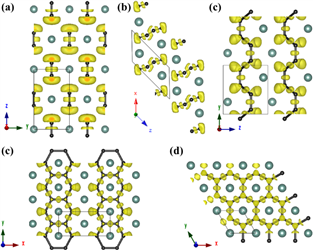P19-FENG Xiaolei
From dimers to sheets: carbon network evolution in superconducting YC2 under pressure
Xiaolei Feng,1,2 Siyu Lu,3 Chris J. Pickard,4 Hanyu Liu, *5 Yanming Ma, *1 and Simon A. T. Redfern*2,6
1State Key Laboratory of Superhard Materials, College of Physics, Jilin University, Changchun, 130012, China
2Department of Earth Sciences, University of Cambridge, Cambridge, CB2 3EQ, UK
3College of Chemistry and Molecular Engineering, Zhengzhou University, 100 Kexue Road, Zhengzhou, 450001, China.
4Department of Materials Science and Metallurgy, University of Cambridge, 27 Charles Babbage Road, Cambridge, CB3 0FS, UK
5Geophysical Laboratory, Carnegie Institution of Washington, 5251 Broad Branch Road NW, Washington D. C. 20015, USA
6Center for High Pressure Science and Technology Advanced Research (HPSTAR), Shanghai, 201203, China


SUMMARY: Carbon-bearing compounds display intriguing structural diversity, as a result of the variation in possible hybrid bonding between carbon atoms. Here, we have used the first-principles calculations and unbiased structure searching techniques, to carry out a systematic structure search on the yttrium dicarbide (YC2) system as a function of pressure. In addition to the experimentally-observed high-temperature low-pressure I4/mmm phase (dimer carbide), we uncovered four new YC2 structures stable under pressure with varying carbon polymerization. At low pressures, a metallic phase with C2/m symmetry (four-member single chain carbide) is stable. This transforms into a Pnma symmetry phase (single chain carbide), upon increasing pressure, with further transformation to an Immm structure (double chain carbide) at 54 GPa before a phase transition to a P6/mmm phase (sheet carbide) at 267 GPa. The results demonstrate that the YC2 system is particularly diverse, with structural transformations on increasing pressure in which carbon exists in the form of dimers (at lowest pressure), transforming to four-member single chain, infinite single chain, double chain and eventually sheet structures on compression. Furthermore, our electron-phonon coupling calculations suggest that the high-pressure phases of YC2 are superconducting as well. Our current results offer insights that aid the understanding and design of new superconductors as well as illuminating the pressure control on carbon polymerization in high-pressure carbides.
